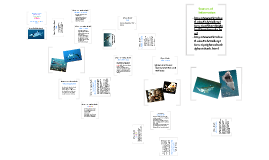Shark Presentation
Transcript: Computer Errors Voltage Finished Plate Iron is the control Scanning a Plate Smeared Plate Incorrect Ratios Iron Setup of Instruments and Scanning a Plate Minimum required voltage is 1.35 V Photoelectrolysis uses sunlight to extract hydrogen from water Hydrogen A great appreciation goes out to the following people who helped the SHArK group achieve their maximum potential throughout this project: Eddie Shapley - Our Project Mentor Mr. Parkinson - SHArK Coordinator Jay Winkler - Caltech Alexandra Turley, Jonathan Moroneso, Robert Hatley, Bryce Beagle, Dakota Reinartz, Cameron Bowe - Previous SHArK Students Paul Bracher - Caltech Jennifer Schuttlefield Christus - University of Wisconsin Mrs. Landry, Mr Howardell, Mr. Clark, Mr. Vivers, Mr. Will, Mr Bernier, Mrs. Coyle - CREST Staff Most plates presented less voltage than the original Iron plate. Plates with iron had the highest peak voltage average (0.109 V), followed by nickel, cobalt, calcium, manganese, and zinc. Creating a Solution and Spotting a Plate By: Sarah DeWeese, Breanna Hassett, Shreya Ramkumar, and Ben Sklar Nickel, Potassium, Calcium Acknowledgments Electrolysis Well Plate 43% of incoming light is visible Photocatalysts react with this to split water into stoichiometric amounts of hydrogen and oxygen Analysis of Error Effect of Metal Oxides on Voltage Production Results Green indicates highest values, red lowest, and gray spots have nothing on them Independent variable: metal oxides Dependent variable: Voltage Hypothesis: More reactive metals will produce more voltage High energy content Clean burning fuel Utilized through hydrogen fuel cell technology Voltage Errors Runny Solutions The original hypothesis stated that plates with potassium and calcium, being the most reactive metals the group would be testing, would produce the most voltage. This was incorrect. Discussion Manganese, Nickel, Calcium SHArK Project Photocatalysts Formula Burned and Warped Plates Setup of Instruments Introduction

















